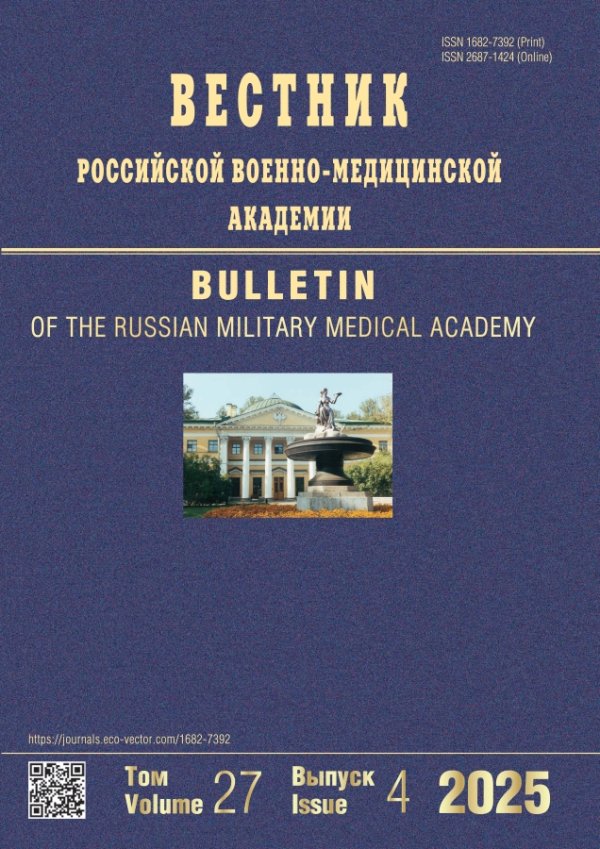Коллекция клещей академика Е.Н. Павловского и современные перспективы молекулярно-генетических исследований
- Авторы: Соловьев АИ1, Бондаренко ЕИ2, Тимофеев ДИ2, Ракин АИ1, Кравцов ВЮ1
-
Учреждения:
- Военно-медицинская академия им. С.М. Кирова
- Акционерное общество «Вектор-Бест»
- Выпуск: Том 21, № 2 (2019)
- Страницы: 140-148
- Раздел: Статьи
- URL: https://journals.rcsi.science/1682-7392/article/view/25934
- DOI: https://doi.org/10.17816/brmma25934
- ID: 25934
Цитировать
Полный текст
Аннотация
Ключевые слова
Полный текст
Открыть статью на сайте журналаОб авторах
А И Соловьев
Военно-медицинская академия им. С.М. Кирова
Email: vmeda-nio@mil.ru
Санкт-Петербург
Е И Бондаренко
Акционерное общество «Вектор-Бест»Новосибирск
Д И Тимофеев
Акционерное общество «Вектор-Бест»Новосибирск
А И Ракин
Военно-медицинская академия им. С.М. Кирова
Email: vmeda-nio@mil.ru
Санкт-Петербург
В Ю Кравцов
Военно-медицинская академия им. С.М. Кирова
Email: vmeda-nio@mil.ru
Санкт-Петербург
Список литературы
- Балашов, Ю.С. Экспериментальная межвидовая гибридизация Аргасовых клещей Ornithodoros papillipes, O. tartakovskyi, O. verrucosus (Argasidae, Ixodoidea) / Ю.С. Балашов // Паразитология. - 1970. - Т. 6, № 3. - С. 274-282.
- Барятинский, М. Лендлиз: маршруты, объемы и долг / М. Барятинский // Военно-промышленный курьер. - 2011. - № 8 (374). - С. 10.
- Бондаренко, Е.И. Выявление генетических маркеров возбудителей клещевых риккетсиозов в ПЦР с помощью наборов реагентов «РеалБест ДНК Rickettsia species» и «РеалБест ДНК Rickettsia sibirica / Rickettsia heilongjiangensis» / Е.И. Бондаренко [и др.] // Новости «Вектор-Бест». - 2018. - №1 (87). - С. 2-10.
- Зорин, Л. Организация автомобильных перевозок воинских грузов через Иран / Л. Зорин, И. Каргин // Воен-истор. журн. - 1974, № 7. - С. 41-48.
- Кербабаев, Э.Б. Кровососущие клещи семейства Argasidae Canestrini 1890 на территории бывшего СССР / Э.Б. Кер- бабаев // Росс. паразитол. журн. - 2012. - № 2. - С. 16-29.
- Козырин, И.П. Среднеазиатские экспедиции академика Е.Н. Павловского в фотографиях и документах Военно-меди- цинского музея / И.П. Козырин, Б.И. Назарцев // Фотогра- фия. Изображение. Документ. - 2014.- Вып. 5. - С. 19-29.
- Магомедханов, В. Ленд-лиз: Иранский коридор в СССР / В. Магомедханов // Современные проблемы науки и образования. - 2015.- № 1. - С. 18-21.
- Назарцев, Б.И. Письма Е.Н. Павловского из среднеазиатской паразитологической экспедиции 1928 года / Б.И. Назарцев // Фотография. Изображение. Документ. - 2014. - Вып. 5. - С. 30-48.
- Мокроусов, В.Н. Советские эпидемиолого-паразитологические экспедиции в Иран в 1941-1943 гг. / В.Н. Мокроусов, В.Ю. Кравцов, Л.Л. Кравцова. // Воен.-мед. журн. - 2018. - Т. 339, № 9. - С. 82-87.
- Никитин, А.Ф. К истории кафедры биологии и паразитологии (малоизвестные страницы) / А.Ф. Никитин. - СПб: ВМА, 1998. - 50 с.
- Павловский, Е.Н. Распространение Ornithodoros papillipes в связи с эпидемиологией клещевого рекурренса в Юго- Восточном Таджикистане / Е.Н. Павловский, Г.Я. Змеев // Тр. Тадж. базы АН СССР. - 1939. - С. 11.
- Петрищева, П.А. Клещевой возвратный тиф / П.А. Петрищева, А.Н. Скрынник / География природно-очаговых болезней человека в связи с задачами их профилактики. - М.: Меди- цина, 1968. - С. 95-119.
- Поспелова-Штром, М.В. Клещи-орнитодорины и их эпидемиологическое значение / М.В. Поспелова-Штром. - М.: Медгиз, 1953. - 235 с.
- Тимофеев, Д.И. Экстракция нуклеиновых кислот из клещей: проблемы и возможности стандартизации / Д.И. Тимофеев, Н.В. Фоменко, М.К. Иванов // Сиб. мед. журн. - 2012. - № 4. - С. 45-48.
- Тимофеев, Д.И. Новые наборы реагентов для выявления нуклеиновых кислот вируса клещевого энцефалита и бор- релий комплекса Borrelia burgdorferi s. l. методом ПЦР с детекцией в режиме реального времени / Д.И. Тимофеев [и др.] // Новости «Вектор-Бест». - 2014. - № 1 (71). - С. 2-11.
- Френкель, М. Трансафриканский маршрут поставок вооружений из США в СССР в 1941-1945 гг. / М. Френкель // США: экономика, политика, идеология. - 1993. - № 5. - С. 42-50.
- Barros-Battesti1, D. M. Immature argasid ticks: diagnosis and keys for Neotropical region / D.M. Barros-Battesti1 [et al.] // Rev. Bras. Parasitol. Vet. - 2013. - Vol. 22, № 4. - P. 443-456.
- Durden, L.A. The U.S. National Tick Collection: A Vital Resource for Systematics and Human and Animal Welfare / L.A. Durden, J.E. Keirans, J.H. Oliver // American entomologist. - 1996. - Vol. 42, № 4. - P. 239-249.
- Hoogstraal, H. Argasid and Nuttalliellid ticks as parasites and vectors / H. Hoogstraal // Adv. Parasitol. - 1985. - Vol. 24. - P. 135-238.
- Hoskins, J. D. Ixodid and Argasid Ticks: Keys to their Identification / J. D. Hoskins // Veterinary Clinics of North America: Small Animal Practice. - 1991. - Vol. 21, № 1. - P. 185-197.
- Guglielmone, A.A. The Argasidae, Ixodidae and Nuttalliellidae (Acari: Ixodida) of the world: a list of valid species names / A.A. Guglielmone [et al.] // Zootaxa. - 2010. - № 2528. - P. 1-28.
- Kuo, C. Tick-borne pathogens in ticks collected from birds in Taiwan / C. Kuo [et al.] // Parasites & Vectors. - 2017. - № 10. - P. 1-13.
- Laaksonen, M. Crowdsourcing-based nationwide tick collection reveals the distribution of Ixodes ricinus and I. persulcatus and associated pathogens in Finland / M. Laaksonen, E. Sajanti, J.J. Sormunen // Emerging Microbes & Infections. - 2017. - № 6. - P. 1-7.
- Persing, D. H. Detection of Borrelia burgdorferi DNA in museum specimens of Ixodes dammini ticks / D.H. Persing [at al.] // Science (New York, N.Y.). - 1990. - Vol. 249. - P. 1420-1423.
- Tobolewski, J.I. Detection and identification of mammalian DNA from the gut of museum specimens of ticks / J.I. Tobolewski [et al.] // J. Med. Entomol. - 1992, № 6. - P. 1049-1051.
Дополнительные файлы







